The League of Monetary Cranks…
…has been established by Scott Sumner, my favorite new blogger. In his latest post, he points out that the author of the leading monetary textbook, Mishkin, is in fact a “monetary crank” because “[t]he sine qua non of a monetary crank is the bizarre belief that even depressions featuring zero interest rates can be magically cured by printing money.”
Exactly. Mishkin–and all other orthodox theorists operating within the aggregate demand paradigm, and that includes most Chicago school guys as well as MIT’ers–are indeed monetary cranks. The WSJ op ed pages, as well as blogs that promise to make the world better through small steps, are chock full of the idea that printing green pieces of paper can help the economy re-coordinate itself after a massive disruption in the physical capital structure. What cranks!
The funny part, of course, is that Sumner is merely trying to show that his own theory–that the Fed caused the crisis by being far too restrictive up until last September–is actually very close to orthodox opinion. So Sumner is really saying, “You’re calling me nuts? Look, if I’m nuts, then everybody in the profession is nuts!”
That’s right, Dr. Sumner, welcome to the Austrian’s world.
Murphy Interviewed on New Book
I’ve been doing tons of these, but this one is fairly long so it gave me time to give complete answers to the questions. In the beginning my words are a little distorted, but I think it gets better a little way into it. (I was hearing feedback on my phone in the beginning, not sure why.)
Toward a Review of Tom Woods’ Meltdown
I always thought it was funny when people would use that phrase; e.g. I have a book called Toward a History of Game Theory. I think it means, “If I weren’t so lazy I would write…” For sure, that’s what it means in this blog post.
Flat out, Tom’s book Meltdown is freakin’ sweet. I had trouble getting through the first chapter or two, not because of anything Tom did, but just because I am so sick of talking about Paulson, MBS, Greenspan’s rate cuts, etc.
But after getting through that necessary drudgery, the book was (is) awesome. I am in amazement at how much great economics and obscure history Tom was able to weave into this thing. E.g. he very quickly but elegantly dispatches with typical objections such as, “Well if it was all the Fed’s fault, what about the panics before 1913?” and “Doesn’t the depression of 1937/38 vindicate Krugman?”
But beyond all that, Tom is just a wonderful writer. I periodically put the book down and just imagine hundreds of thousands of people reading the paragraph I just read, and I think, “Wow, that is so great that Tom just shot that into so many minds. Awesome.”
Not that this is even the best passage I’ve come across, but it’s where I am in the book and it illustrates what I mean:
If we want a repeat of [the Depression] years, or if we’d like to share the fate of Japan for the past 18 years, we should listen to Paul Krugman and implement exactly the same policies that gave the world these two disasters. On the other hand, we might for once permit ourselves a heretical deviation from the Official Version of History (TM), cease waving incense before the Great Presidents we are taught to admire, and consider the possibility that the government’s efforts to fight depressions may in fact have lengthened them. Let’s spare ourselves the ordeal of a ten-year depression–and the added indignity of being told ten years from now that it was the government’s brilliant plan that eventually rescued us.
In short, if you have been on the fence about ordering Tom’s book–maybe you think that his buddies at LRC are exaggerating its quality–let me go on the record and say believe the hype. If you have a leftist friend who thinks deregulation caused our woes, and your friend is willing to read one book on the matter just to humor you, go ahead and give him Meltdown. (Just make sure it’s Tom’s Meltdown, since there is some liberal collection of essays with the same title!)
Potpourri
* Robert Wenzel tells us “the next big thing” in the financial world. (I think he means, the next big thing after Bernanke’s balance sheet.)
* The principles of Walt Disney’s success [pdf].
* The 1870s depression wasn’t so bad after all (HT2 Tom Woods).
* This guy says what everyone needs to be saying: It is immoral and illegal to torture people, even if you work for the government and even if you have lawyers telling you it’s OK. (Note that I’m not saying Obama or the AG should prosecute anybody for these actions–and if you consider yourself an extreme skeptic of government actions to “make the world a better place,” I invite you to really put your views to the test when it comes to the federal government punishing itself for violating rights.) Before 9/11, it would have made a good Onion headline to say, “Torture: How much is too much?” But that’s basically where we are now, here in the shining city on a hill, land of the free, home of the brave. Anyway, let me get off my soapbox and give an excerpt from the linked article:
Today the Washington Post features yet another screed…arguing that the torturing (once again using the Orwellian term “enhanced interrogation techniques”) of prisoners has been so effective that we cannot possibly give up this weapon in our arsenal. Thiessen asserts self-justifying, unverifiable McCarthyite claims regarding the efficacy of torture. Now I am highly skeptical about this — nothing written by professionals in the field suggests to me that this is true….
But in the end, I think this is not an avenue worthy of argument. I actually don’t give a sh*t if it’s effective. It’s wrong, barbaric, dehumanizing, and altogether unworthy of how a great people and great nation would act. We don’t eschew torture for utilitarian reasons — we do it based on our deeply held belief in our principles, in the rule of law, the dignity of man, and our shared common humanity. We don’t resist the use of torture because it is the easy thing to do or because we are not under threat or not afraid. We resist it because we believe at a core level that some principles are sacrosanct even if we may face risk or even death at the hands of fanatics — we stand by the essential tenet that we mustn’t become monsters in order to defeat a monster.
TARP, a Criminal Enterprise
So says Larry Kudlow (HT2EPJ). Some strong words indeed for a CNBC article:
Is the whole TARP plan a criminal enterprise? Sounds farfetched, I suppose. But after reading about Special Inspector General Neil Barofsky’s report, it may well be that TARP is just one big criminal problem.
I know, let’s play a game! I’m going to give you two quotations from economic analysts from last year, before the TARP had been approved. One of them is Kudlow, and the other is some other guy. Can you guess (a) which is Kudlow and (b) who the other guy is?
Economist #1 on TARP, from September 30, 2008:
The Paulson bailout failed in the House. If it isn’t a death blow to the plan, it should be. This is not an economic plan: it is a heist….The economics behind it are nonsense, but we are naïve if we spend much time even considering the “arguments” for it. This is a money and power grab, pure and simple….Because of all the mumbo jumbo thrown around to show why the plan is necessary, some very sharp academic economists are in a tizzy trying to treat this as an extra-credit question, rather than a crime scene.
Economist #2 on TARP, from September 27, 2008:
The single-biggest mistake in the Paulson bank-rescue-plan marketing effort has been the failure to explain clearly how taxpayers are going to recoup $700 billion used to buy toxic assets at auction in order to unfreeze the banking system. In other words, folks don’t understand how taxpayers will be paid back, and may actually make profits, which will enable the new government debt to be erased after the Treasury bank-rescue is completed.
Here’s the key point: Any loan package bought by the Treasury will be 100 percent taxpayer owned. Period.
Local Communities Start Printing Own Currency
A few people have mentioned this to me; here’s a USA Today article (so it must be true):
A small but growing number of cash-strapped communities are printing their own money.
Borrowing from a Depression-era idea, they are aiming to help consumers make ends meet and support struggling local businesses.
The systems generally work like this: Businesses and individuals form a network to print currency. Shoppers buy it at a discount — say, 95 cents for $1 value — and spend the full value at stores that accept the currency.
I’m not really sure how to process this. I think it is just an elaborate form of coupon clipping, but it surprises me that it has taken off.
Barney Frank on Ron Paul (and not on Steady Cam)
I’m sorry folks, but ever since I testified before his committee (though he was never in the room when I was speaking!), I have liked Barney Frank. There’s all kinds of funny stuff in this clip (HT2LRC)–especially watch for him talking about the Democrats treating Ron Paul better than the Republicans did–but note that he says something and then catches himself, “I take that back…” Just little acts of human courtesy and humility like that are what I like about him. Not saying it overshadows his role in the housing boom, but c’mon it’s a low bar he has to get over to be one of my favorite Congressmen.
Does the 1937-38 "Depression Within the Depression" Vindicate the Keynesians?
In the thread of my infomercial for my new book, a reader asks an excellent question:
Just yesterday I received your book and after skimming it, I must say that it looks like it is going to be excellent! Hopefully I can start reading it this weekend. One point though. In part of your first chapter you bring up the “depression within the Depression” of 1937/’38. In that chapter you describe what happened in that episode. However, when I searched the latter part of the book for your explanation of why that “depression within a depression” occured, I could not find it. I think that explaning why the ’37/’38 depression occured is important because I recall Krugman using it to defend Keynesian theory. If I recall correctly, he said that FDR decided to try to reduce the deficit at that time by raising taxes and cutting spending and for this reason the tenuous recovery was aborted. This, Krugman claims, is evidence that Keynesian theory is accurate. So, my question to you is, do you explain the cause of the depression of ’37/’38 in your book, and if so on what pages? If you don’t discuss it in your book, how would you answer Krugman?
My response:
Thanks for the note. You’re right, any Keynesian who reads the book is going to accuse me of deception for “glossing over” the 1937/38 episode.
There were a few things going on, which I didn’t go into because my editor was already pruning way back on the technical tangents.
So yes, FDR tried to close the budget deficit somewhat, and that’s what Krugman et al. think did it.
But there was also a doubling (I believe) of the reserve ratio for the banks, and that’s what monetarists point to, to prove their theory that it was insufficient money pumping.
Yet a third thing was that the Supreme Court upheld the NLRB, and union membership shot way up in one year, pushing up certain wages. Not surprisingly, this is the factor that I like. 🙂
So basically you had all kinds of stuff changing, and whatever the economist’s favored theory is, will be there for him to see.
I think I did a pretty good job exploding the alleged medicinal role of huge deficits by comparing Hoover’s experience with Harding’s. I.e. if it were really true (as Krugman claims) that cutting the deficit caused the problem in 37/38, then what Wilson/Harding did in 1920-21 should have yielded by far the worst economy in US history. But no, it paved the way for the best economy in US history (Roaring Twenties).

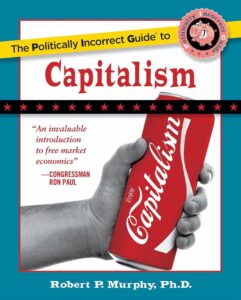
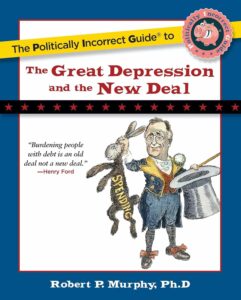
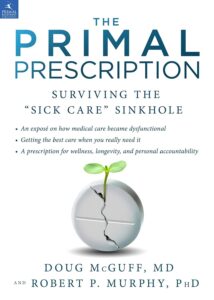
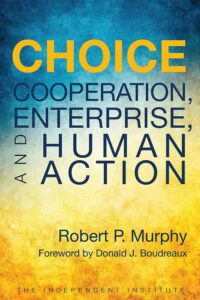
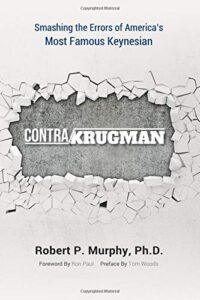
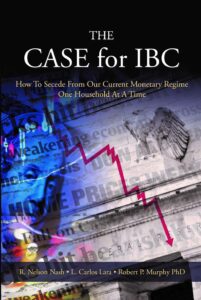
Recent Comments